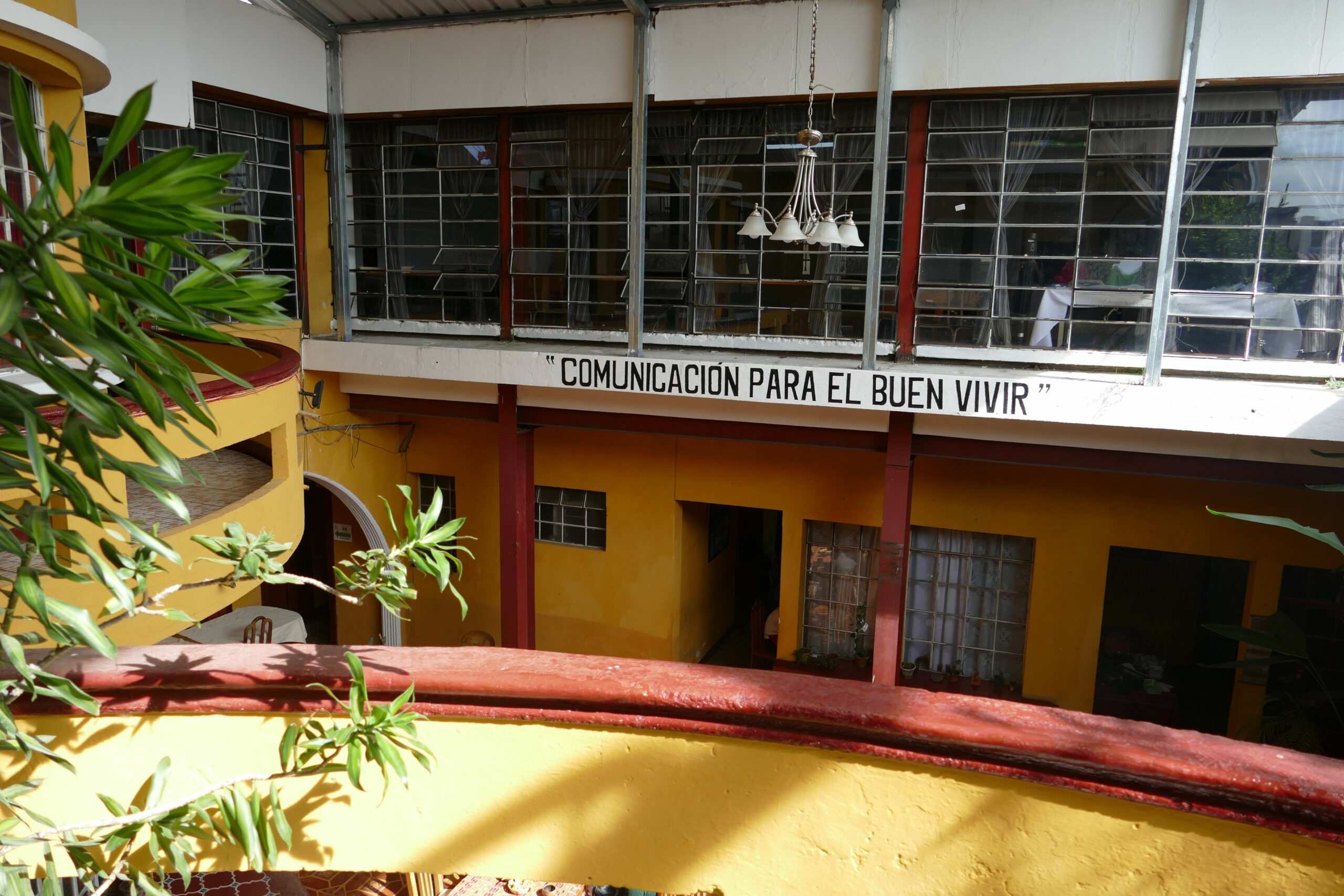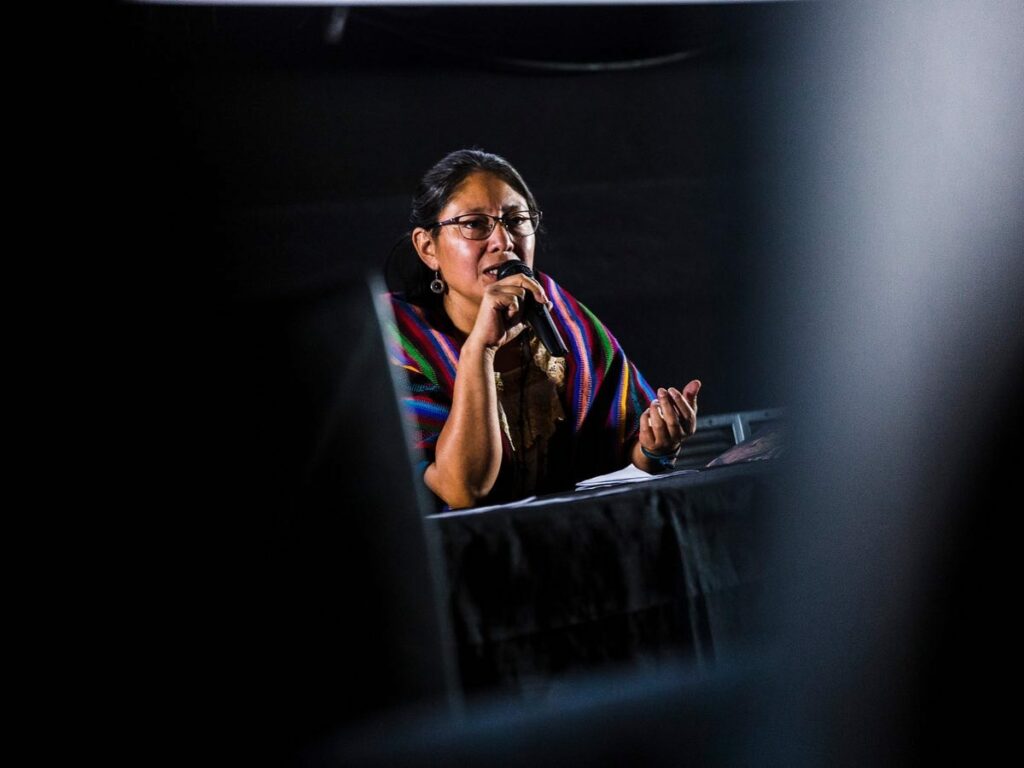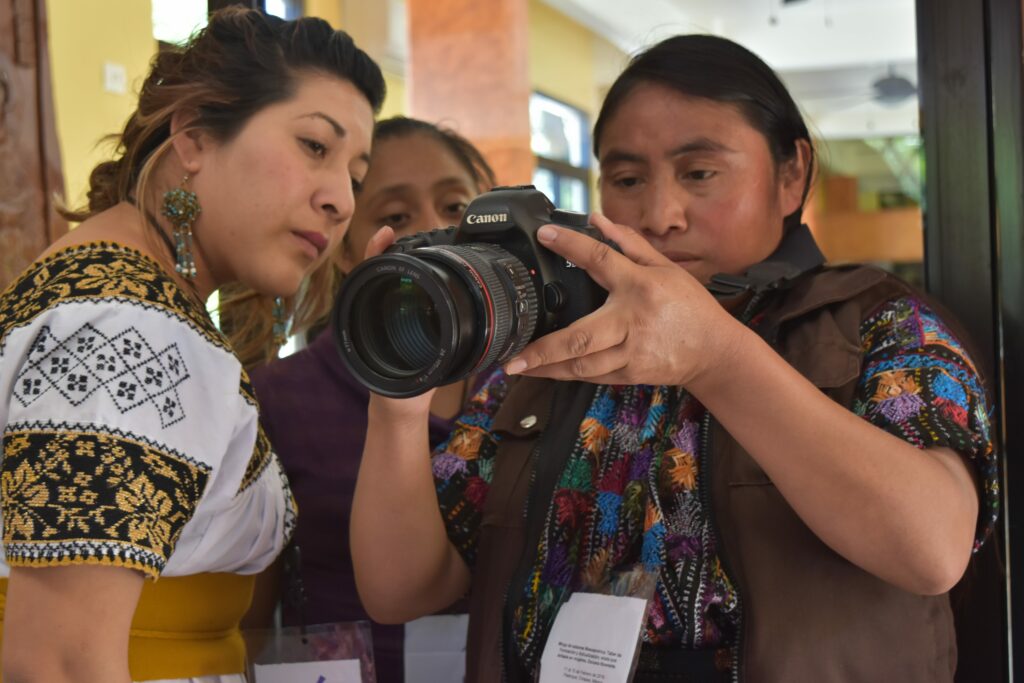
Indigenous Cinema
Indigenous cinema is an indivisible part of a people’s communication: communication as an act of life, a process of constructing identity, a system of relations with the collective and the ancestral, a connection and a dialogue with Mother Earth. It goes beyond instrumental communication, as the communication adopts the role of a power to recover colonised territories and defend the identity of indigenous peoples.

Sebastiana Par Álvarez, leader of the K’iche Peoples Council (CPK) at IndiFest 2019
We have to understand that we are facing a crisis of civilisation and that this crisis “is not only an economic, environmental, political crisis; it is a crisis of modern Western civilisation” that leads us to reflect on the role of a black or indigenous communicator, on the role of communication that goes beyond the formal, as exercised through radio or video, in terms of each culture’s ancestral communication.
Organización Fraternal Negra de Honduras (Black Fraternal Organization of Honduras, OFRANEH)
Communication as an act of life that transmits not only information but also feelings, emotions and thoughts, using different languages such as words, tongues, visuals, and body.
Ojo de Agua Comunicación

Communication Workshop, CLACPI, Chiapas, 2018
“Another communication that is different, that weaves us together with life and Mother Earth, which is the wisdom or the capacity we must develop and revitalise to understand, talk to and listen to our Mother Earth, respecting her. That is where our other communication should start. Communication begins in the womb, from when we feel our mother’s sadness and joy, from when we feed ourselves with the first fruits of our Mother Earth, from when we exchange glances, signs and dreams around the fire. Our natural communication identifies us as collective beings, because we are always exchanging, dialoguing, feeling and expressing as a community. Communication is present when we help our fathers and mothers to sow, harvest, light the fire, husk the corn, cook the food; when we chew the sacred leaf and smoke tobacco; when we communicate with the spirits, with the water, with the fire, with the wind, with the plants, with the
animals and with all the children of our Mother Earth; when we listen to grandparents’ memories and we weave ourselves into them; when we participate in the community minka in assemblies, in board meetings, in the meetings of the councils, in the rituals of our community; when we reflect and dance in our constant spoken or action meetings in the territory; when we walk through our reserves, listening and collecting the word of the communities; when we harmonise with our spiritual guides; when we walk the word of the peoples in defence of life and territory; when each and every one of the above examples and all of those I have left unnamed are spaces for learning, for knowledge, for our own communication practices, for words that are walked and of paths that become words…”
Tejido de Comunicación para la Verdad y la Vida (Fabric of Communication for Truth and Life) Association of Indigenous Councils of Northern Cauca
DISCUSSION “Communication for the Defence of Rights”.
With the participation of: Xochitl Leyva (Mexico) and David Hernández Palmar (Venezuela).
This talk was part of the programme of the 13th IndiFest Indigenous Film Festival of Barcelona 2020.
—
SOURCE:
Informe sobre la situación del derecho a la comunicación con énfasis en los y las comunicadores(as) indígenas y negros(as) de américa latina. Coordinadora Latinoamericana de cine y Comunicación de los Pueblos Indígenas, Proyecto videoastas indígenas de la Frontera Sur y alterNativa Intercanvi amb Pobles Indígenes, Chiapas, México. February 2019. https://drive.google.com/file/d/1qC7kDItuEDH4NC_AbiHzZ_9vWnP0QCdQ/view